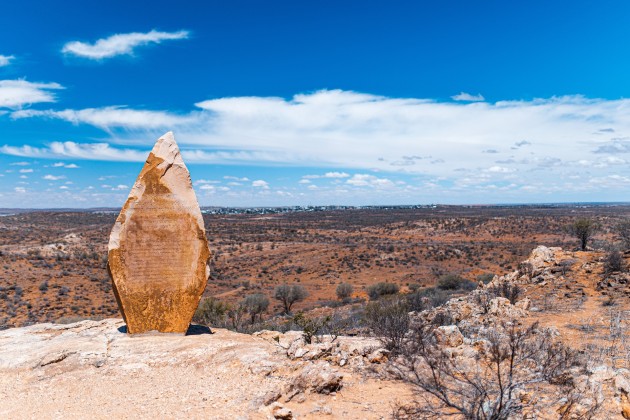Australian savannahs form one of the largest continuous tropical savannah ecosystems on Earth, stretching across vast regions of Queensland, the Northern Territory, and Western Australia. These breathtaking landscapes—characterized by open woodlands, rolling grasslands, and vibrant biodiversity—are essential to the ecological and cultural fabric of the continent. Covering approximately 1.9 million square kilometers, Australian savannahs are home to countless species of birds, reptiles, and mammals, many of which are found nowhere else in the world. Organizations like the Australian Government Department of Climate Change, Energy, the Environment and Water emphasize their global ecological significance and ongoing need for protection.
The climate of the savannahs is as dramatic as the scenery. With distinct wet and dry seasons, temperatures often soar beyond 35°C, particularly in the dry months from May to October. These climatic extremes shape every aspect of life here—from animal migration to vegetation growth and even cultural traditions of Indigenous Australians. As noted by the Bureau of Meteorology, the region receives between 500 to 1,500 mm of rainfall annually, with most precipitation falling during the summer monsoon. During the dry season, wildfires are a natural and essential force that help regenerate the ecosystem—a practice increasingly guided by Indigenous fire management and supported by groups like the North Australian Indigenous Land and Sea Management Alliance.
The ecological importance of Australian savannahs cannot be overstated. More than 400 species of birds—including the endangered Gouldian finch—rely on this ecosystem for breeding, feeding, and shelter. According to the CSIRO, these savannahs host over 100 mammal species and around 300 reptile species, creating one of the richest biodiversity hotspots in Australia. Additionally, major conservation efforts led by organizations such as Bush Heritage Australia and WWF Australia focus on restoring and preserving this vital landscape from threats like invasive species, overgrazing, and land clearing.
Cultural heritage is deeply woven into the identity of the savannahs. Indigenous communities have lived in and cared for these lands for tens of thousands of years, using seasonal patterns and ecological knowledge passed down through generations. The savannahs are filled with sacred sites, songlines, and ancient traditions that continue to influence conservation practices today. The AIATSIS and The Nature Conservancy Australia have emphasized the critical role of Indigenous-led environmental stewardship in protecting both the land and its stories.
As the threats of climate change and industrial expansion loom, the future of Australian savannahs depends on a strategic blend of traditional knowledge and scientific innovation. Platforms like the Northern Australia Environmental Resources Hub are working to ensure sustainable development and environmental resilience. Through collaboration and awareness, Australia can preserve this iconic and vital ecosystem not just for today, but for generations to come.
Wild Landscapes and Endless Horizons: Discovering Australia’s Savannahs
Geographic Spread of Australian Savannahs
Australian savannahs cover a vast area primarily across northern Australia, spanning over 1.9 million square kilometers. These ecosystems stretch across Queensland, the Northern Territory, and Western Australia. The most expansive region is the tropical savannah of northern Australia, which is considered the largest in the world. These grass-dominated ecosystems are interspersed with eucalyptus woodlands and are essential for maintaining the ecological balance across Australia’s tropical north.
Climate and Seasonal Rhythms
Australian savannahs experience a distinct wet and dry season. The annual rainfall ranges between 500 mm to 1,500 mm, concentrated mainly in the summer months from November to April. Temperatures often exceed 35°C during the dry season, contributing to regular bushfires that shape the landscape. These fire-adapted systems regenerate quickly, allowing many endemic species to thrive despite the harsh climate.
Vegetation and Biodiversity
The vegetation of Australian savannahs includes grasses like Sorghum spp. and Heteropogon contortus, alongside open-canopy trees such as Eucalyptus tetrodonta. This region supports a unique mix of flora and fauna, hosting over 400 bird species, 100 mammal species, and 300 reptile species. Notably, it is home to the endangered northern quoll and the Gouldian finch, both indicators of ecosystem health.
Fire and Landscape Management
Fire is a natural and vital process in Australian savannahs. Controlled burns, known as “patch burning,” are used to reduce fuel loads and protect biodiversity. According to the North Australian Fire Information project, over 40% of savannah land is burned annually, with modern strategies aiming to decrease late dry-season fires, which are more destructive.
Human Activities and Conservation Challenges
Despite their natural resilience, Australian savannahs face pressures from grazing, mining, and invasive species. Cattle grazing impacts over 75% of savannah regions, often leading to overgrazing and soil degradation. Conservation initiatives like the Northern Australia Environmental Resources Hub are working to balance ecological preservation with sustainable land use. Australian savannahs remain critical for both environmental and cultural sustainability.
Life on the Edge: Ecology and Wildlife of Australian Savannahs
Keystone Species of the Savannah
Australian savannahs are home to keystone species like the frill-necked lizard, agile wallaby, and the red-tailed black cockatoo. These animals play vital roles in seed dispersal and vegetation management. The population of agile wallabies in Queensland savannahs alone exceeds 2 million, contributing to the ecological resilience of the region.
Birdlife and Migratory Patterns
Over 50% of Australia’s bird species can be found in savannah regions. The savannahs are crucial for migratory birds such as the rainbow bee-eater and the brolga. A 2021 CSIRO study found that these ecosystems support over 25% of all known Australian bird breeding habitats, making Australian savannahs indispensable for avian biodiversity.
Predators and Prey Dynamics
Predator-prey interactions define the ecosystem balance.




